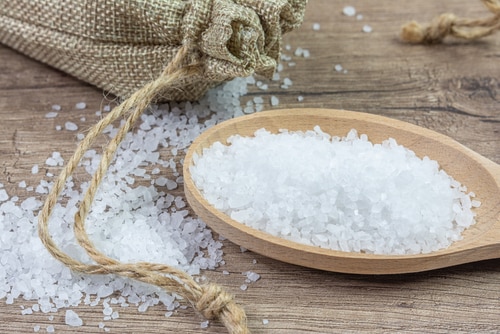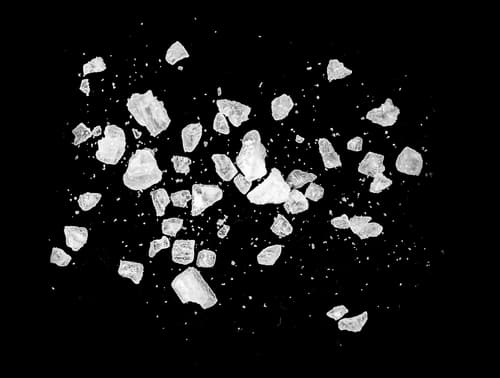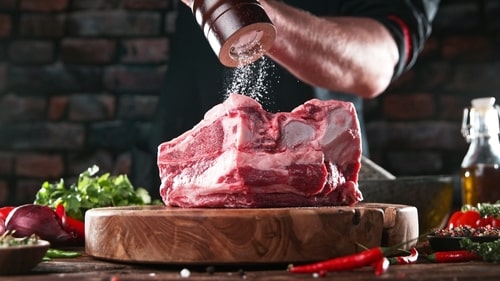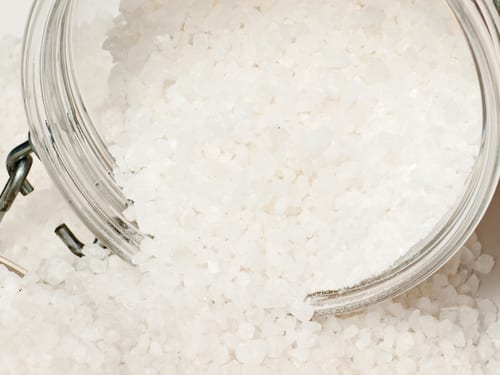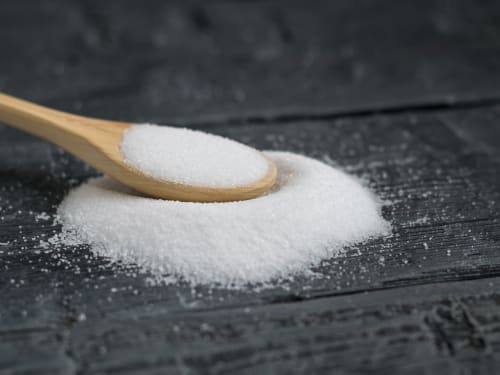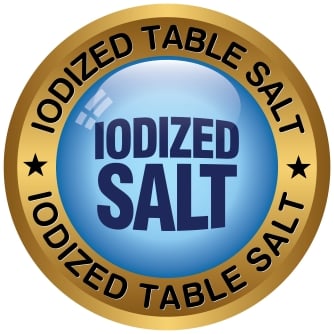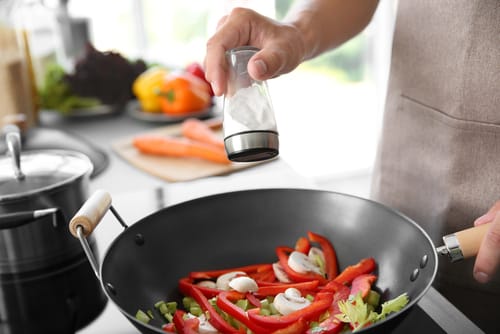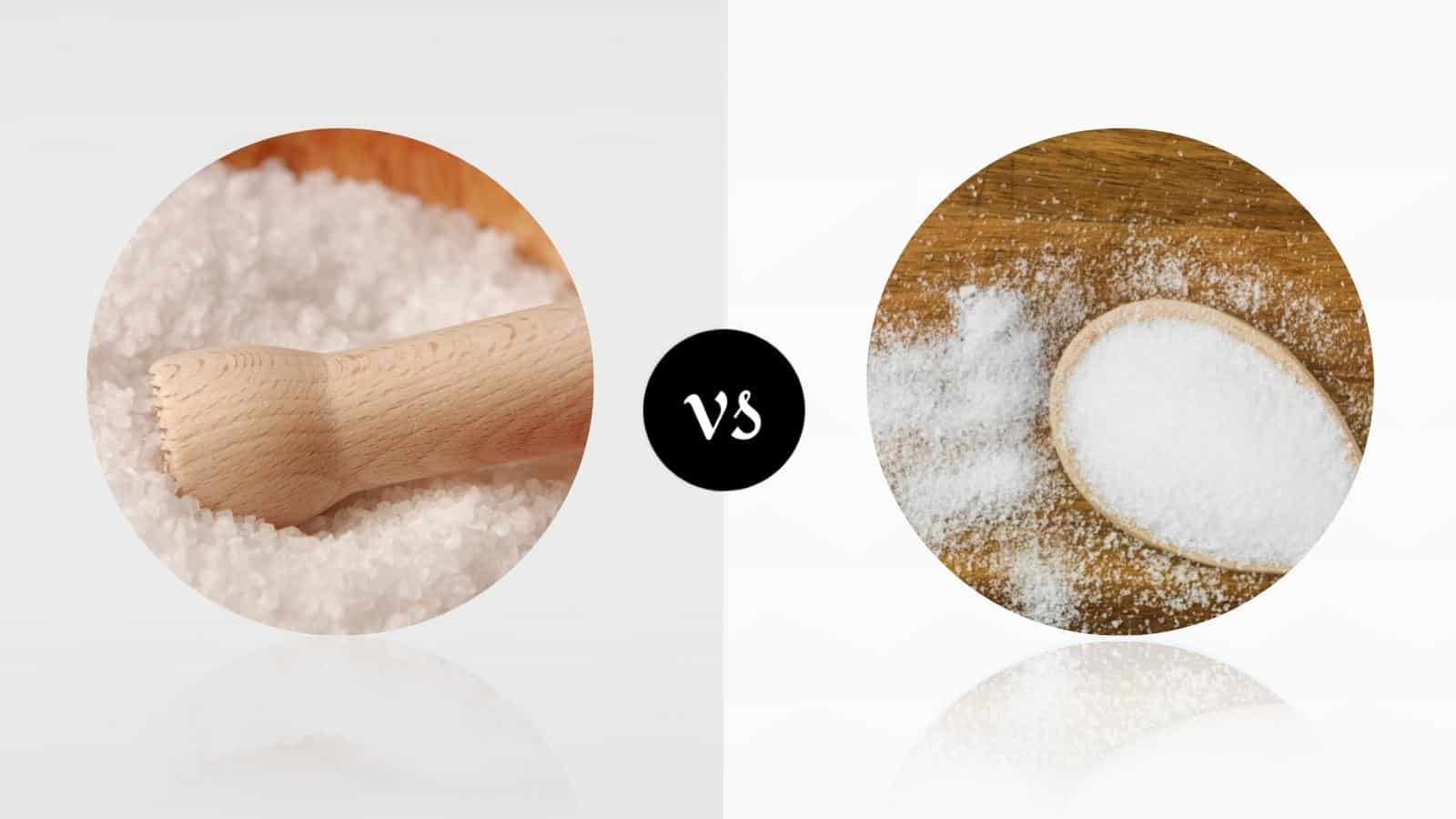
Mankind has been consciously using salt as a flavor enhancer and preservation agent since ancient Egypt. It’s the core seasoning that every dish needs a particular quantity of in order for its natural flavor to be brought out.
Food without salt tastes flat, regardless of what you’re eating.
Yet, when it comes to those unfamiliar with a broad range of ingredients, coarse vs. fine salt can be a confusing choice. The last thing that anyone wants is to oversalt a dish.
Under-salting can be corrected, but the meal is almost always ruined if over-salted. This is why knowing when to use which variety is so vitally important.
Our comparison between these two basic forms of salt covers everything you need to know to pick the right version every time.
Coarse Vs. Fine Salt Comparison
| Coarse Salt | Fine Salt | |
|---|---|---|
| Definition | Roughly Textured Salt Composed Entirely Of Sodium Chloride Crystals With A Large Grain | Refined Ultra-Fine Salt Crystals Composed Of 97%-99% Sodium Chloride Fortified With Anti-Caking Agents Or Iodine |
| Names | Coarse Salt, Kosher Salt, Kashering Salt, Koshering Salt, Kitchen Salt, Rock Salt, Sea Salt, Flake Salt, Gros Sel, Sel Gris, Fleur De Sel | Fine Salt, Table Salt, Refined Salt, Iodized Salt, Fortified Salt |
| Varieties | Sel Gris, Gros Sel, Fleur De Sel | Iodized, Non-Iodized, Fortified, Doubly Fortified |
| Consistency | Rough Texture, Far Coarser Than Table Salt, Large Fully Formed Crystals | Ultra-Fine Granular Consistency |
| Flavor | Mildly Salty Flavor With A Salty Taste That Lingers And Does Not Dissipate | Slight Metallic But Bold Salty Flavor That Dissipates |
| Intensity | Medium Intensity Of A Varying Range Dependent On Coarse Salt Type | Extremely Intense Salty Flavor |
| Weight | Slightly Heavier Than Fine Salt Due To Size Of Sodium Crystals | More Lightweight Than Coarse Salt, Dissolves Quickly |
| Uses | Cooking & Seasoning | Direct Seasoning, Quick Cooking |
| Shelf-Life | No Expiry But From 3 Years Onward Consistency Suffers | No Expiry Date, 5 Years Free From Odors & Clumps |
| Affordability | Equal Starting Price As Fine Salt, Higher End Varieties Available | Cheaper Than Coarse Salt |
Coarse vs Fine Salt
Coarse Salt
The optimal salt for almost all cooking purposes is coarse salt. It’s versatile enough for just about anything and affordable enough to take the place of fine salt as long as you’ve got a suitable mill or grinder to grind it to the consistency of refined salt on the fly.
Let’s take a closer look at coarse salt and all its defining characteristics.
What Is Coarse Salt?
Coarse salt is seasoning salt made entirely of sodium chloride salt crystals with a large grain that is either used as-is when cooking or ground finer using a grinder or mill for use as table salt.
Unlike kosher salt, which is a type of coarse salt, additives and anti-caking agents may be included but typically make up a very low concentration.
Names
There are several terms commonly used to refer to coarse salt. Colloquially, coarse salt is known as cooking salt, kitchen salt, rock salt, sea salt, and flake salt.
Although a variety of coarse salt rather than an alternate name, many people call it kosher salt, kashering salt, or koshering salt. In France, and available as a French import is Gros Sel, Sel Gris, and Fleur de Sel.
Varieties
The three classical French classifications of coarse salt that most will encounter are Sel Gris, Gros Sel, and Fleur de Sel.
Gros Sel is the French classification of standard coarse salt, which is also available as Gros Sel de Guerande, the moist version.
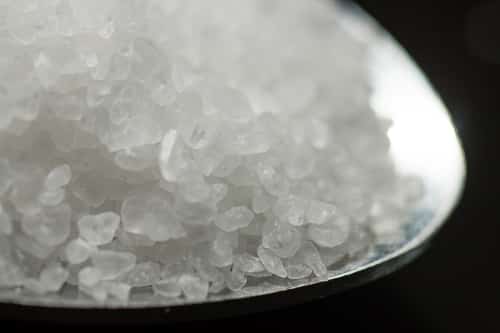
Sel Gris is a French variety of coarse natural sea salt that’s harvested differently from white sea salt. Due to touching the bottom of the salt raking pan first, Sel Gris takes on a gray coloring.
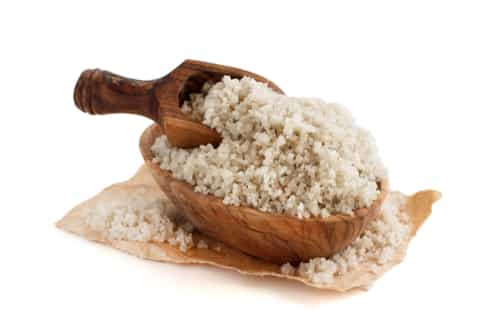
Fleur de sel, which is also termed flor de sal, is the most delicate of all-natural sea salts. The name itself means “flower of salt” and hints toward the exclusivity of this ancient type of coarse salt.
Fleur de sel is coarse salt harvested from the uppermost layer of salt crystals that form atop seawater amid the process of evaporation.
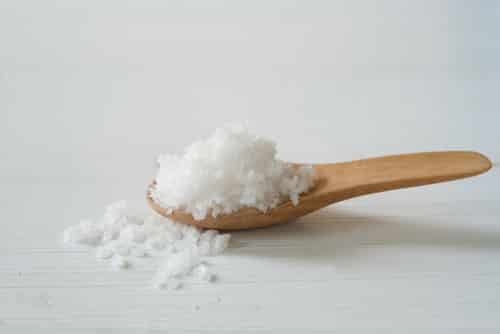
Consistency
Even though coarse salt technically classifies all coarse varieties of salt that are rougher than fine table salt, coarse salt is almost always referring to the coarsest varieties of salt with granules that are similarly shaped to sugar granules but much, much larger.
The large salt crystals are moisture-resistant and extremely hard, which makes grinding before direct use essential.
Flavor
The exact flavor profile of each type of coarse salt depends on its quality, where the salt was harvested, and how it was obtained.
Compared to refined fine table salt, all coarse salt is milder in salty flavor but has an earthy, mineral quality that’s simply not present in its counterpart. Its taste lingers more than fine salt does when added to a dish.
Intensity
Every brand of coarse salt will offer a different intensity. However, all sea salt offers less intense saltiness as opposed to fine salt.
The main reason for coarse salt being less salty than fine salt is because of the way that coarse salt crystallizes with a significant amount of air in between the sodium chloride molecules.

Fine salt grains are extremely concentrated with very few air particles in between as opposed to large coarse salt.
Be careful not to make the mistake of tossing too many mildly salty coarse salt crystals into your food, or they’ll quickly dissipate into an intensely salty flavor that lingers.
It may be milder than fine salt but don’t underestimate the size and thus the quantity of salt in each coarse crystal.
Weight
Each individual salt crystal weighs more than the tiny single salt grains present in fine salt. Coarse salt granules also take longer to dissolve due to their structure and weight.
Uses
The best time to use coarse salt instead of fine salt is when you want to impart lasting saltiness with a mineral-like depth of flavor into any meal.
This makes it perfect for seasoning stews, curries, bakes, slow-cooking sauces, marinades, and rubs. Most chefs prefer coarse salt over fine salt across all applications, grinding it down to fine consistency fresh directly onto whatever is being seasoned.
Shelf-Life
Expect a maximum shelf life of up to three years from coarse salt. At this point, moisture will begin to cause the crystals to melt and meld into each other.
The salt is still safe for consumption and contains the same taste and intensity of flavor. This being said, coarse salt that contains no additives will last indefinitely. It does not spoil.
Affordability
You’ll find coarse salt selling for the same price as fine salt. Several higher-quality types of coarse salt retail for many times the price of fine salt.
Fine Salt
The salt filling just about every salt shaker is fine salt, otherwise known as table salt. Unless you’re cooking or from a foodie’s household, fine salt is the salt most are used to.
Here’s an in-depth breakdown of fine salt and all its defining characteristics.
What Is Fine Salt?
Fine salt is seasoning salt for consumption consisting of refined salt crystals composed of 97% to 99% sodium chloride that’s been purified of imperfections and then either fortified with anti-caking agents or iodized to allow it to stabilize as powder-like granules without caking and flow.
Names
Fine salt is also commonly known as table salt, refined salt, fortified salt, and iodized salt.
Varieties
Fine salt is available as standard refined table salt with varying concentrations of sodium chloride to filler ratio.
Iodized salt, which has been enriched with potassium iodide to supply healthy levels of iodine, is the second variety that is equally as common as regular salt.
As a type of fortified table salt, the exact concentration of iodine and other compounds like dextrose differ. There is also doubly fortified salt containing iron and iodide for those prone to anemia.
Consistency
Table salt has an ultra-fine granular consistency, with each salt crystal ground down to a texture that’s finer than sugar but coarser than powder.
Flavor
Due to the good presence of anti-clumping agents that are usually metal-based, fine salt has a signature metallic taste which might be unpleasant for several professional chefs and foodies.
This is also one reason many people consider coarse salt over fine salt. Table salt or fine salt is highly iodized, and it goes through a good number of processing methods. As a result, the salty intensity of flavor is short-lived and dissipates quickly.
Fine salt isn’t recommended for slow cooking or extended cooking periods as the final product will be far less salty and flavorful than you’d expect.
Intensity
Fine salt is intensely salty and much saltier pinch for pinch than any variety of coarse salt.
Weight
Salt with a fine consistency like table salt weighs far less per grain than coarse salt weighs per crystal. As a result, and due to the structure of the salt crystal, fine salt dissolves far faster than coarse salt and salt flakes.
Uses
Fine salt is, as its colloquial name suggests, table salt. It is best used to season food directly before eating and not as a seasoning in any food that is going to be cooked over a prolonged period.
It is fine for seasoning quick-cooking meals, but in most cases, fine salt is for direct seasoning.
Shelf-Life
Even though salt doesn’t expire, fine salt is very susceptible to picking up tastes and odors from other compounds nearby.
As a result, the most that most will be capable of keeping their table salt fresh and free from other unwanted tastes and smells is five years when correctly stored.
Affordability
While exceptions do exist, as in the case of gourmet brands of pure refined salt, fine salt is far cheaper than coarse salt. The lower purity, cheaper iodized salt is about the most affordable form of seasoning available worldwide.
What Is The Difference Between Kosher Salt And Coarse Salt?
The main difference between kosher salt and coarse salt is that kosher salt is a type of pure coarse salt that has medium-sized salt crystals that are the perfect size for extracting moisture from the meat as is performed during the koshering or “kashering” process.
Whereas coarse salt is a broad classification that includes several types of pure sodium salt with large crystals of varying sizes.
Koshering is performed to make meat safe for Jewish consumption by extracting the blood, thereby bringing it into alignment with The Torah, which forbids consuming animal blood.
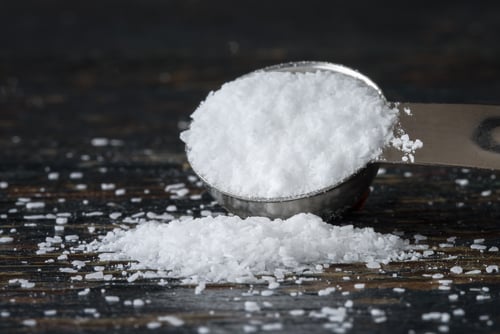
What Is The Difference Between Coarse Vs. Fine Salt?
The main difference between coarse and fine salt is that coarse salt, as the name describes, has a rough, jagged texture whereby the salt crystals have not been crushed, refined, and smoothed down, whereas fine salt has been ground down to a powder-like, pourable consistency.
Due to being roughly milled and unconcentrated, coarse salt has far more rustic, lingering saltiness whereas the flavor of fine salt is intense but fleeting.
Which Is Best Between Coarse Vs. Fine Salt?
The better pick between coarse vs. fine salt depends on what you plan to use for seasoning. Opt for fine salt when seasoning any cold food. Fine salt is also an acceptable choice for directly seasoning any type of food just before you eat it.
As the more intense type of salt, you’ll find that it seasons your food to the right degree easier with less use.
Alternatively, for a more complex depth of flavor and slightly less saltiness for the same volume of crystals, coarse salt is the salt of choice – the only true pick for professional chefs and foodies.
